dreamsat
Specialist Contributor
- Joined
- Mar 23, 2018
- Messages
- 1,204
- Reaction score
- 1,771
- Points
- 113
- My Satellite Setup
- 2,20m Kathrein, 3,7m Andrew, KU,KA,C,C-Ext. LNBs
- My Location
- germany
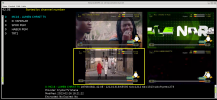
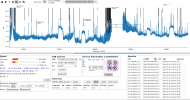
My first ever Ka-band result. Unfortunately only 1 mux so far, and a spectrum which has many false peaks.
This is on a 1.2M dish. I found 2 other muxes in the spectrum, one with a decent signal but only data.
The LNB is in an offset position, which actually made it easier to adust the focal spot without potentially detuning the dish
for Ku (I spent much time on that). I found an initial approximation by using a Ku LNB in the offset position first. This gave me a signal
a strong as the main Ku-band LNB. After inserting the kA LNB I got a 1dB signal in the spectrum. With some more fiddling I could
elevate the signal on 18768L to about 5dB. The LNB is not yet rigidly secured. This is using a chinese LNB (BWEI).
Could the false spectral peaks be the result of some resonance due to the depolarising plate (that probably
did not originally come with the LN? The peaks are huge in value and they can also be seen on the V8 finder, so they are not
a problem with neumoDVB or with the DVB card.
I also noted that tbs6909x can better cope with this weird spectrum than the tbs5927. It locks faster for example.
Have others also encountered such false peaks ok Ka LNBs? I seem to remember reading something about a similar problem but can't find the
relevant thread (may not even be on this forum). The peaks are very strong, often occur at the same frequencies (with sometimes a small difference in frequency) and they are definitively not coming from a satellite.
In any case, it is a start. In the screenshot 4 real muxes are present. All the other peaks, especially the huge ones, are fake.
In the process of testing I found and fixed several minor bugs in neumoDVB. These will be committed later.
I also noticed that attaching an inclinometer to a rotor can magically move the dish. Probably this is due to the magnets
in the inclinomater generating signals causing the rotor to reset. :-<
View attachment 147817View attachment 147819
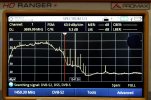
My first ever Ka-band result. Unfortunately only 1 mux so far, and a spectrum which has many false peaks.
This is on a 1.2M dish. I found 2 other muxes in the spectrum, one with a decent signal but only data.
The LNB is in an offset position, which actually made it easier to adust the focal spot without potentially detuning the dish
for Ku (I spent much time on that). I found an initial approximation by using a Ku LNB in the offset position first. This gave me a signal
a strong as the main Ku-band LNB. After inserting the kA LNB I got a 1dB signal in the spectrum. With some more fiddling I could
elevate the signal on 18768L to about 5dB. The LNB is not yet rigidly secured. This is using a chinese LNB (BWEI).
Could the false spectral peaks be the result of some resonance due to the depolarising plate (that probably
did not originally come with the LN? The peaks are huge in value and they can also be seen on the V8 finder, so they are not
a problem with neumoDVB or with the DVB card.
I also noted that tbs6909x can better cope with this weird spectrum than the tbs5927. It locks faster for example.
Have others also encountered such false peaks ok Ka LNBs? I seem to remember reading something about a similar problem but can't find the
relevant thread (may not even be on this forum). The peaks are very strong, often occur at the same frequencies (with sometimes a small difference in frequency) and they are definitively not coming from a satellite.
In any case, it is a start. In the screenshot 4 real muxes are present. All the other peaks, especially the huge ones, are fake.
In the process of testing I found and fixed several minor bugs in neumoDVB. These will be committed later.
I also noticed that attaching an inclinometer to a rotor can magically move the dish. Probably this is due to the magnets
in the inclinomater generating signals causing the rotor to reset.
My first ever Ka-band result. Unfortunately only 1 mux so far, and a spectrum which has many false peaks.
This is on a 1.2M dish. I found 2 other muxes in the spectrum, one with a decent signal but only data.
The LNB is in an offset position, which actually made it easier to adust the focal spot without potentially detuning the dish
for Ku (I spent much time on that). I found an initial approximation by using a Ku LNB in the offset position first. This gave me a signal
a strong as the main Ku-band LNB. After inserting the kA LNB I got a 1dB signal in the spectrum. With some more fiddling I could
elevate the signal on 18768L to about 5dB. The LNB is not yet rigidly secured. This is using a chinese LNB (BWEI).
Could the false spectral peaks be the result of some resonance due to the depolarising plate (that probably
did not originally come with the LN? The peaks are huge in value and they can also be seen on the V8 finder, so they are not
a problem with neumoDVB or with the DVB card.
I also noted that tbs6909x can better cope with this weird spectrum than the tbs5927. It locks faster for example.
Have others also encountered such false peaks ok Ka LNBs? I seem to remember reading something about a similar problem but can't find the
relevant thread (may not even be on this forum). The peaks are very strong, often occur at the same frequencies (with sometimes a small difference in frequency) and they are definitively not coming from a satellite.
In any case, it is a start. In the screenshot 4 real muxes are present. All the other peaks, especially the huge ones, are fake.
In the process of testing I found and fixed several minor bugs in neumoDVB. These will be committed later.
I also noticed that attaching an inclinometer to a rotor can magically move the dish. Probably this is due to the magnets
in the inclinomater generating signals causing the rotor to reset. :-<
View attachment 147817View attachment 147819
Dreamsat,Hi deeptho,
I think it's the Chinese KA band LNB. Unfortunately the quality is not that good. I have bought various special LNbs in China and each one had something different or wrong. I myself only work with converted and modified Gilat PLL LNBs. I can't detect such peaks there, although I intervene on the oscillator. I have very good reception on 42 East and unfortunately I can't see a fourth mux there.
best regards dreamsat
Iv'e seen similar spur results from some cheaper and more expensive C-band lnb's ..... my Ka band lnb collection are from either Norsat / Hughes / XMW / Gilat rx boards and are used with their designed feeds but i can't remember seeing any unwanted spurs etc whilst in operation on the dish. I find that Ka band lnb positioning on a reflector can be critical for obtaining optimum performance - Ku & C a little more forgiving. ** Any nasty near by interference radiation at all ?.
.............................................................................................................................................................................................................................................................................................................................................................................................................................................................................................................
View attachment 147826
Llew,No doubt poor screening of the oscillator chamber. I had the same problem when doing a mod of an LNB - one screw wasn't really tightened up.
Just poor design in the case of Chinese LNB I expect.
Any screw that clamps the metal cover over the whole circuit board. Some LNBs have a separate chamber for the DRO.Llew,
at some point I will open it up. Are you taking about the external housing regarding the "one screw not tightened up"?
Or probably some internal metal shielding.
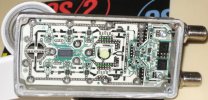
There won't be any glue. There needs to be complete RF shielding of the circuitry by the cover.Llew, then here is a theory: there may be some glue between the two parts of the casing. Maybe that layer is
too thick then. Just a theory.
There won't be any glue. There needs to be complete RF shielding of the circuitry by the cover.
I'm not familiar with the LNB, whether it uses a PLL or DRO oscillator. In either case, if the screws resist moderate effort in unscrewing, the shielding is probably OK.
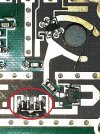
>"As implied earlier, it may just be the poor design of the LNB that's causing the unwanted spikes."<
With you on that one Llew, here's another example from one of my collection of what seems to be a factory modification to the filter & DRO off an lnb marketed as an Extended Ku band lnb, probably from a standard Ku pcb design ?.
......................................................................................................................................................................................................................................................................................................................................................................................................................................................................................................
View attachment 147836
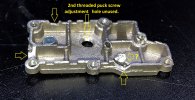
Here again from the same lnb - the RF sheilding covering the DRO puck etc, showing post production of sections that have been ground out of the original casting etc - does not have the look of a professional design - - boils down to 'cheap product=comprimised design' . It's a shame the real pucka ones are so expensive.
View attachment 147837
The DVB card is the spectrum analyser. It is pretty accurate.@deeptho
It's hard to diagnose using a DVB card, do you have a specrum analyser? Even an RTL-SDR stick would be a useful tool.
I put it on two dishes in two different places. I will test (weekend) soemtime with a wet cloth in front of the LNB.If the spikes appear at different places on each sweep, it could be instability or pulse interference at RF or IF. Does it do it when off the dish? If so, does it change
That is a good test. I will perform it during the weekend. However, I am pretty sure this is not interference.dramatically if you put your hand over the feed or any part of the LNB? If so it may be instability. If it only does it when pointed at a satellite, it may still be instability but it could be pulse interference at RF or IF. If at IF, I'd expect you to see it on other LNBs unless the IF cable was damaged.
Yes, I thought of that. Makes no difference. I tried both on and off.I've seen a couple of problems with C band LNBs:
This one doesn't look like yours but it may be worth making sure the 22k is off. It happened
where the 22kHz filtering is non-existent and the LO becomes modulated by the 22k.
At least my cheap chinese C-Band LNB does its job well, which shows that not everything made in China is bad.Another is where the front end is unstable with particular matches. The Zinwell C band LNBs seem susceptible to this, see Just Sharing This - AV-Comm Polariser + Zinwell lnbf
Many cheap C band LNBs, including Titaniums, seem to be close to instability .


